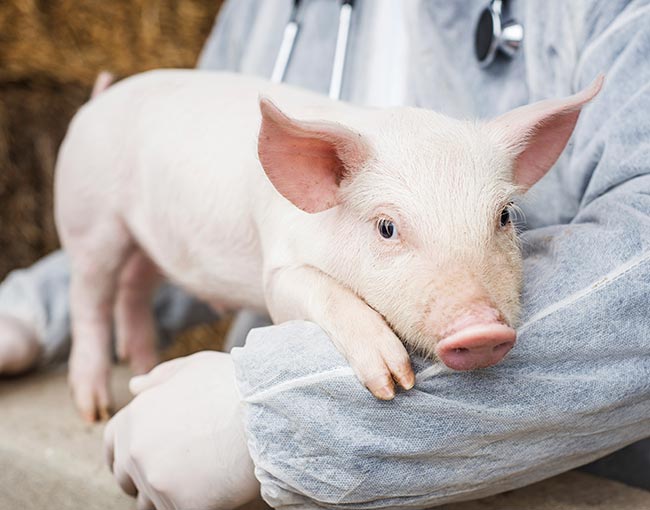The U.S. Food and Drug Administration (FDA) continues to publish new Rules as part of its implementation of the Food Safety and Modernization Act (FSMA). In addition to new animal feed and food safety rules, the FDA recently issued other updated regulations, including updating the Veterinary Feed Directive (VFD) regulations regarding VFDs and VFD Drugs (drugs intended for use in conjunction with animal feeds and pet foods). This published directive focuses on three aspects:
- Control by the veterinarian
- Control over the proper usage of the VFD by the client
- Control over the animals that receive the VFD
- Safety
- Prevent misuse or overuse of VFDs for extra-label use (which is now prohibited)
- Proper management and monitoring of toxicity
- Record-keeping requirements for distributors
- Judicious use of Medically Important Antimicrobials
- Eliminate the use of such compounds for boosting animal productivity, as opposed to treating infections or diseases
VFDs
A Veterinary Feed Directive, or VFD, should be thought of in terms similar to a prescription, in that it is an order from a veterinarian for a drug product referred to as a “Veterinary Feed Directive Drug,” or VFDD. VFDDs are animal drugs intended for use on, in, or in conjunction with an animal feed. Historically, such products were subject to a less rigorous regulatory compliance regime. In addition, VFDDs were often provided based not on the treatment of a disease, but upon on a desire for improved production (growth production and feed efficiency). However, with the increased focus on animal health and the industry’s growth, more attention is being paid to animal feeds, feed additives and animal medications. With the new VFD Rule published by the FDA, the way veterinarians and their clients and patients receive and use VFDs will change significantly.
Veterinary Feed Directives are now defined by a set of regulations that have increased the regulatory burden on veterinarians and VFDD distributors and sponsors. VFDs must now be (i) written, not given orally or by telephone, (ii) ordered by a licensed veterinarian for the VFDD; and (iii) must contain very specific information including the following:
- The name and contact information of the ordering veterinarian
- The identity of the VFDD
- Instructions on the use of the VFDD, including warnings
- The expiration date of the VFDD (not the order itself)
- The end date of the VFD
It is important to note the difference between the end date of the VFD and the expiration of the VFDD. The expiration date of the VFDD is the expiration of the drug product itself. The end date of the VFD, on the other hand, may be a completely different date, and is based upon information analyzed by the veterinarian including not only the expiration date of the VFDD but also the disease being treated and the animal being given the VFDD.
VFDDs are classified into two different categories:
- Category I - Those drugs that do not require a withdrawal period at the lowest level of use.
- Category II - Those drugs that either require a withdrawal period or are regulated on a “no residue” basis with zero tolerance.
These classifications affect the written directive as the new rule clearly states that the prescribing veterinarian must take the withdrawal time and residual effect into account in prescribing the VFDD. These categories will also dictate when and if an animal intended for the human food chain may re-enter the food production cycle. There are record-keeping requirements in place concerning this withdrawal and residual effect contained in the Rule. So, although the FDA does not regulate veterinarians (a task typically left to state licensing entities), this new Rule has opened a door into that area for the FDA.
VFDs and the VCPR
The new Rule also emphasizes the use of VFDs only within the scope of the Veterinarian Client Patient Relationship, or VCPR, and explicitly limited the VCPR based on federal standards. This standard is defined by those times when the treating veterinarian:
- Has assumed responsibility for making medical judgments for the animal’s health
- Has obtained the client’s agreement to follow the instructions of the veterinarian
- Has sufficient knowledge of the animal to enter at least a general or preliminary diagnosis
- Is available for follow-up in case of adverse reactions by the animal
The federal standard is found at 21 C.F.R. §530.3(i). However, the FDA has recognized in these new Rules that states often have their own standards. In those cases where a state has in place a VCPR standard that includes these federal requirements, the FDA will require compliance with the state standard. Conversely, if the state standard does not contain these federal requirements or where there is no state standard, the FDA will require, for a VFD to be legal, compliance with the federal standard. In the meantime, the FDA is working with those states with inadequate or absent standards to put in place state standards that comply with the federal requirements.
Manufacturers, distributors and veterinarians must also be aware of the regulatory requirements of VFDs. The new Rule includes significant new record-keeping requirements, as well as a required notice to the FDA of the intent to sell/distribute VFDDs per VFDs.
At Thompson Coburn, we have a team of attorneys with experience in navigating such FDA requirements, registering companies with the FDA, filing FDA notices, and assisting food, feed and animal drug companies ensure compliance with FDA regulations. We would be happy to speak to any members of the industry with questions or concerns regarding Veterinary Feed Directives, Veterinary Feed Directive Drugs, Veterinary Client Patient Relationships, as well as other issues raised in this blog post.

